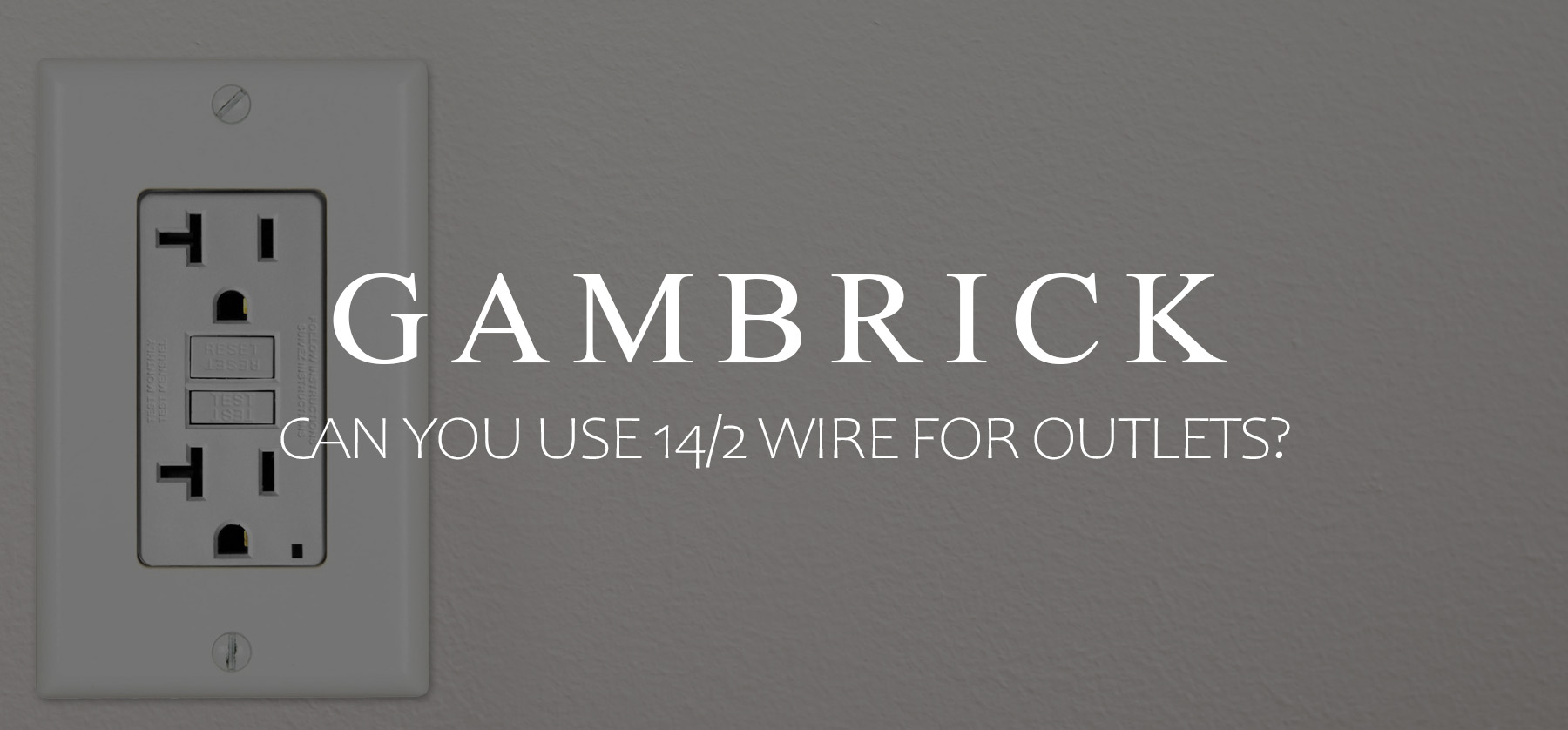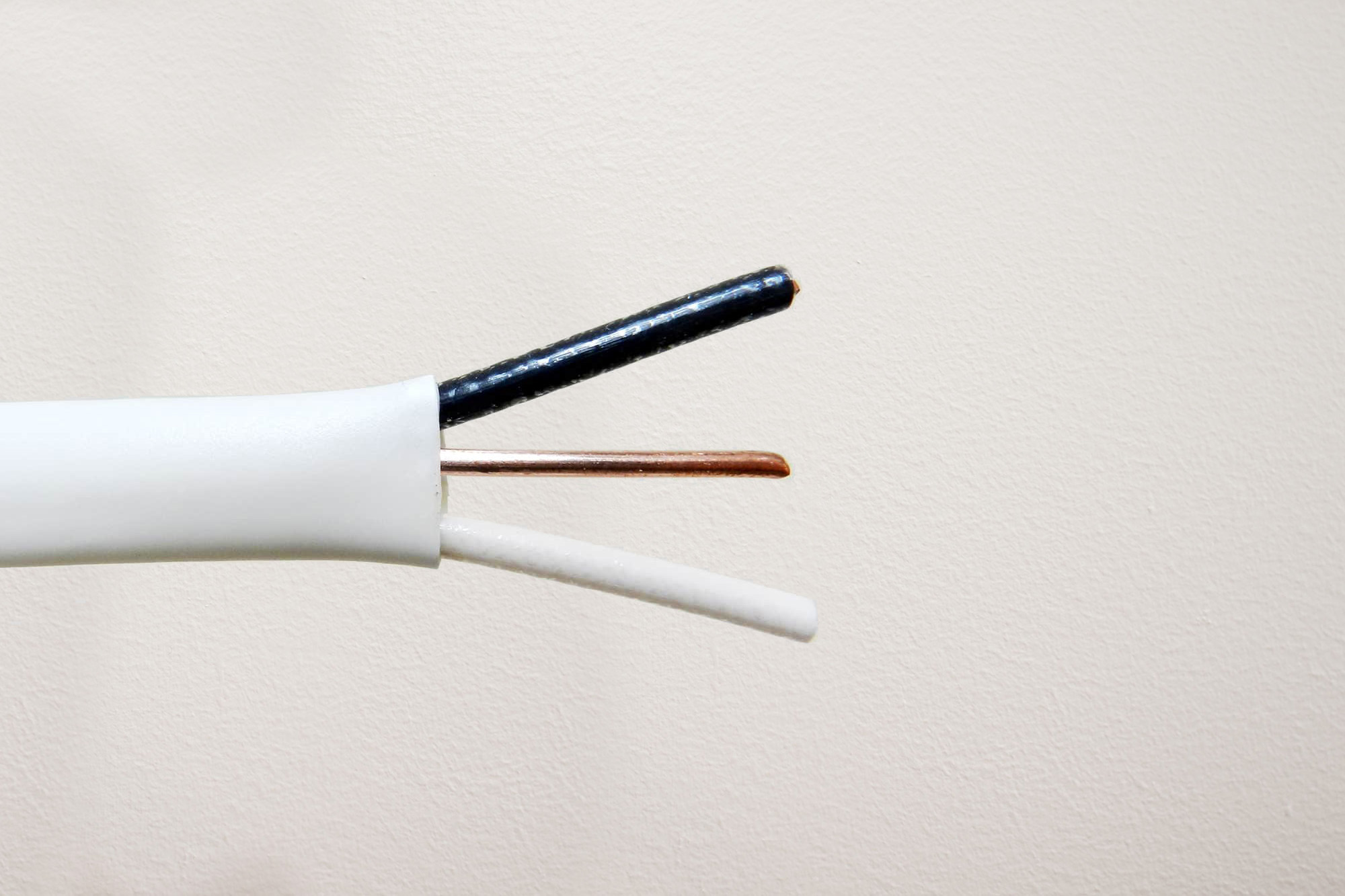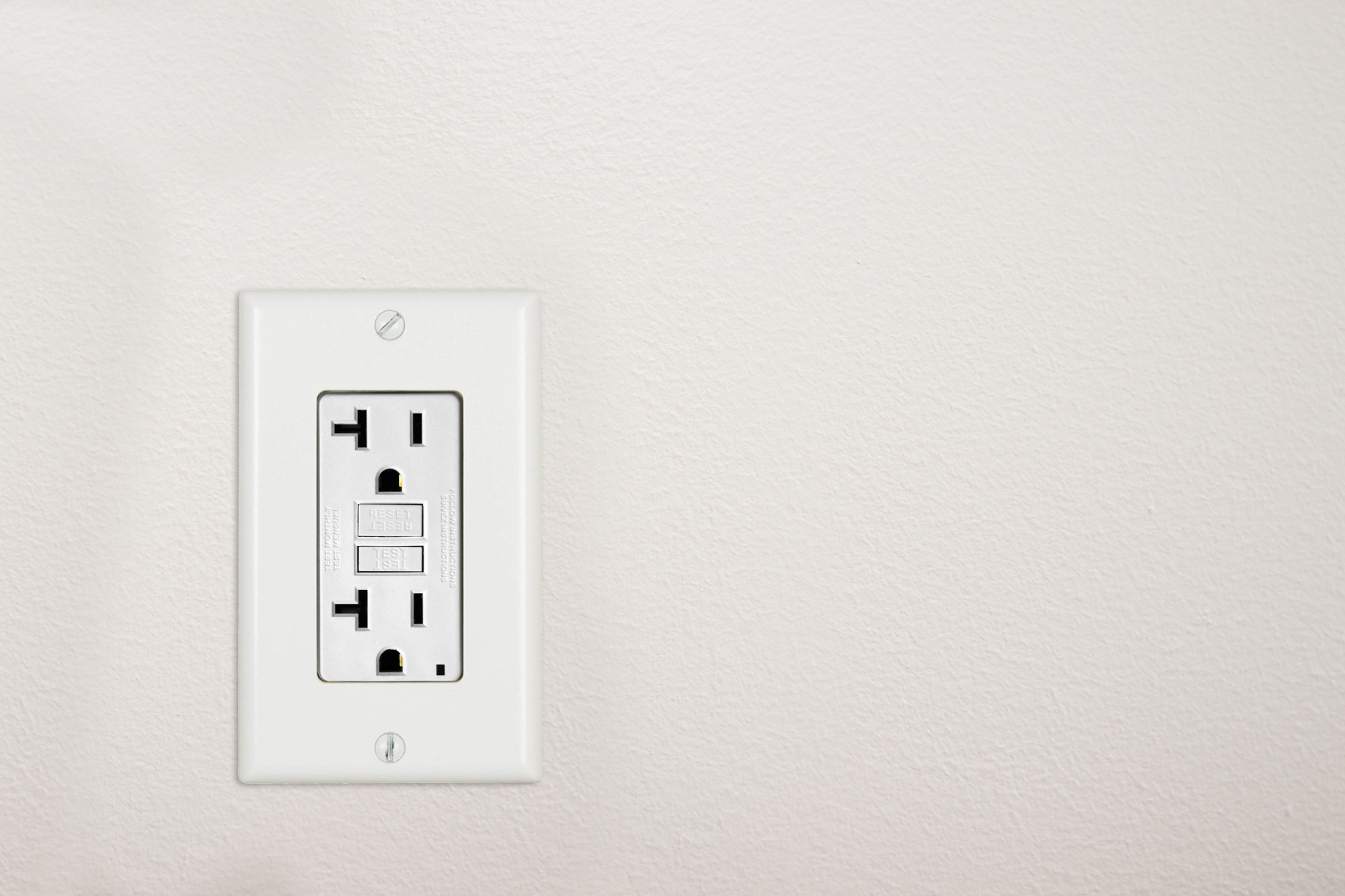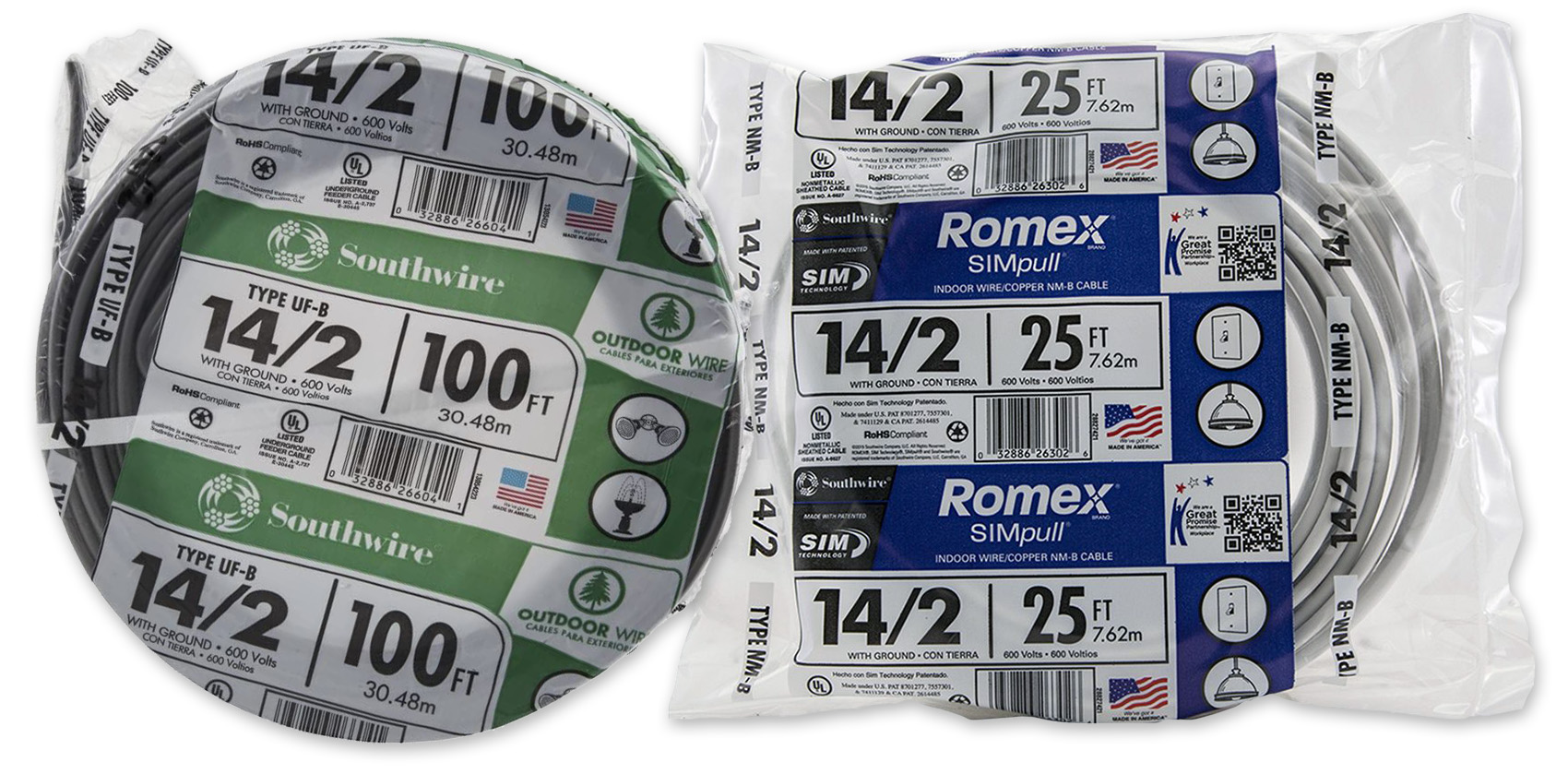Can You Use 14/2 Wire For Outlets?
You can use 14/2 wire for outlets on a 15-amp circuit. However, if the circuit is 20-amps or above, you can’t use a 14-gauge wire. Each individual wire in the sleeve has a diameter of just 1.63 mm, which is too thin to carry 20-amps of power. The wire will heat up and possibly cause a fire. 14/2 wire consists of two wires, a hot (black) and a neutral (neutral) with a ground (copper). It’s a fairly thin wire that can only carry 15-amps, which is why it’s more commonly used for house lighting.
14 AWG should not be used on a 20-amp circuit. That would send too much power through the wires which could result in overheating and possibly an electrical fire. If the outlets are on a 20-amp circuit, 14/2 wire is not large enough, use 12/2 wire instead.
14/2 wire can be used on a 15-amp circuit. At 120 Volts (15-amps x 120 volts = 1800 volt-amperes) you could run ten (10) receptacles on the circuit. But I would recommend de-rating down to eight (8) for safety.
Before wiring an outlet, check the breaker box to determine the amperage of the circuit. If it’s a 20-amp circuit you should not use a 14-gauge wire.
What Is 14/2 Wire?
14/2 wire is a sleeved cable that contains three 14-gauge electrical wires which are each 1.63mm thick. It’s often refereed to by electricians as Romex which is the brand name of a popular wire manufacturer. The outer sleeve can be either white, yellow or grey which signifies where the wire is typically used. Yellow and white are for inside use while grey is for exterior. But you can also buy 14/2 that’s encased in a metal protective sleeve for applications where the wire is exposed.
The copper wires inside the sleeve are color coded to make wiring easier. The white wire is neutral, black is hot and copper/green is ground. This can be very helpful because the color coding of the wires matches the colors on most outlets and light fixtures.
14/2 wire is sold in spools of different lengths, in custom cut lengths or as an entire roll. It’s a very common gauge of wire used for residential lighting and outlets on a 15-amp circuit. However, you can not use it on a 20-amp circuit or above.
What Do The Numbers 14/2 Mean?
For a 14/2 wire, the numbers 14 and 2 signify the gauge of the wire and how many hot and neutral wires are in the sleeve not including the ground. The first number, 14, is the wire gauge. The second number, 2, is the number of hot and neutral wires. So every 14/2 wire contains 3 wires, a hot (black), a white (neutral) and a ground (copper or green).
Every 14/2 wire contains the following smaller wires inside the outer sheathing:
- White: A neutral wire.
- Black: This is the hot wire which carries the current.
- Copper/Green: Ground wire.
A wire’s gauge is a measure of its thickness. The lower the number the thicker the wire. A 14-gauge wire is relatively thin at just 1.63 mm in diameter. For this reason, it can only safely handle 15-amps worth of power. If you use 14/2 on a 20-amp circuit, you risk overheating and a possible fire.
Is 14-Gauge Wire Used For Outlets?
14-gauge electrical wire, a.k.a. 14/2, can be used for outlets and lights on a 15-amp circuit. But it’s most commonly used to power light fixtures that require low amperage. Most electrical outlets are on a 20-amp circuit which requires at least a 12-gauge wire.
- 14-gauge wire (14/2) is typically used for wiring light fixtures on a 15-amp circuit.
- 14-gauge wire can be used for outlets on a 15-amp circuit.
- You can use 14-gauge wire for lights and outlets both indoors and out.
- If your outlet is on a 20-amp circuit you can not use 14-gauge wire. You must use at least a 12-gauge wire instead.
Although 14-gauge wire can be used for outlets, it’s more commonly used for lighting because the amperage of lights is generally lower. Most outlets are on a 20-amp circuit with a 12-gauge wire such as 12/2 or 12/3.
Before wiring an outlet, check the breaker box to determine the amperage of the circuit. Every breaker should have a number printed on it to signify its amperage. If the breaker says 20, it means the circuit is 20-amps. In this case you need a 12-gauge wire instead of 14.
What’s The Maximum Amperage 14/2 Wire Can Handle?
14/2 wire can safely handle a maximum amperage of 15. For this reason, you should only use 14/2 wire on a 15-amp circuit. For 20-amp circuits, you need at least a 12-gauge wire. Choosing the correct wire gauge for your circuit’s amperage is extremely important.
- A 14/2 wire can safely conduct 15-amps of power.
- Never use 14/2 wire on a circuit conducting more than 15 amps.
- Check your breaker box to determine the amperage of the line before wiring a new outlet.
- If the circuit is 20-amp, use a 12-gauge wire.
You should always check the breaker box before wiring an outlet to determine the amperage of the line. Every breaker should have a number printed on it which signifies the lines amperage. For example, a 20-amp breaker means 20-amps of power run through the circuit.
Breakers with numbers higher than 20 are typically dedicated circuits for high power appliances and equipment like a dryer, microwave or electric range.
Can You Run 14-Gauge Wire On A 20-Amp Circuit?
No, you can not run 14-gauge wire on a 20-amp circuit. The maximum amount of amperage you can run with a 14-gauge wire is 15. Using a 14-gauge wire on a 20-amp circuit could trip the breaker, overheat the wire and/or potentially cause a fire.
The correct wire to run on a 20-amp circuit is at least 12 gauge. A 14-gauge wire should only be used on a 15-amp circuit.
- You should not run a 14-gauge wire on a 20-amp circuit.
- Using 14-gauge wire on a 20-amp circuit will trip the breaker and potentially overheat the wire which could cause a fire.
- The minimum wire size you should use on a 20-amp circuit is 12-gauge.
- 14-gauge wires are rated for no more than 15-amps.
To determine the amperage of the circuit you’re working on you have to check the breaker panel. Open the panel and find the breaker that controls power to the circuit. The amperage of the circuit should be stamped on the handle of the breaker. For example, the number “20” indicates a 20-amp breaker which is a 20-amp circuit.
Higher number breakers are typically for large appliances and equipment like electric ovens, air conditioners and microwaves.
How Many Outlets Can You Put On A 14/2 Wire?
A 15-amp circuit using with 14/2 wire can power up to ten receptacles. However I recommend wiring a maximum of (8) for safety reasons. 14/2 wire can be used on a 15-amp circuit. At 120 Volts (15-amps x 120 volts = 1800 volt-amperes) you could run ten (10) receptacles on the circuit. But I would recommend de-rating down to eight (8).
A receptacle is defined as anywhere you can plug in an appliance. Most standard outlets have either two or four receptacles but specialized outlets for an electric range or dryer have just one.
If you are using standard two-receptacle outlets, you can wire five of them to a single 15-amp circuit using 14-gauge electrical wire. However I would de-rate down to four.
- You can power 10 receptacles on a 15-amp circuit with 14/2 wire.
- I recommend de-rating down and running a maximum of 8 receptacles on a 15-amp circuit with 14/2 wire for safety reasons.
- Using standard 2 receptacle outlets, you can generally wire 5 outlets to a single 15-amp circuit using 14/2 wire. However I recommend de-rating down to 4 outlets.
- If you require more outlets/receptacles on single circuit, upgrade to a 20-amp circuit with 12/2 wire.
A 20-amp circuit using 12-gauge wire can handle more amperage than a 15-amp circuit using 14-gauge wire which means you can install more standard outlets on the circuit.
Can You Wire Outlets With 14/2 Romex?
Yes, you can wire outlets with 14/2 Romex cable as long as the circuit is no more than 15-amps. Romex is the brand name of wiring made by Southwire Company, LLC of Carrollton, Georgia. Many electricians and builders will refer to standard electrical cable as Romex because it’s a popular brand name of wire.
- You can use 14/2 Romex to power outlets on a 15-amp circuit.
- Never use 14/2 Romex to power outlets on a circuit higher than 15-amps.
- If your outlets are on a 20-amp circuit you need 12-gauge Romex.
14/2 Romex is a brand name of standard 14-gauge wire in a sheath. The sheath will typically be yellow, white or grey and include 3 wires inside: a black (hot), white (neutral) and copper/green (ground).
You can use 14/2 Romex anywhere plans call for 14/2 standard electrical wire.
| Wire Gauge | Wire Diameter | Amperage | Common Use |
| 14 gauge | 1.63 mm | 15 amps | Lighting & Outlets |
| 12 gauge | 2.05 mm | 20 amps | Outlets |
| 10 gauge | 2.588 mm | 30 amps | Large Appliances Like Water Heaters & Electric Dryers |
| 8 gauge | 3.264 mm | 40 amps | Extremely Large Appliances Like Electric Ranges |
What Size Wire Do I Need For An Outlet?
What size wire you need for an outlet depends on the amperage of the circuit. The two most popular wire gauges used in residential homes is 12-gauge and 14 gauge. A 20-amp circuit requires at least a 12-gauge wire while a 15-amp circuit requires as least a 14-gauge wire.
However higher amp circuits are typically used for large appliances and equipment like dryers, electric ranges, microwaves and air conditioners. Most homes have at least one or two 30 to 50-amp circuits for things like dryers, ranges, water heaters and air-conditioners.
- 14-gauge wire can be used to wire outlets on a 15-amp circuit.
- 12-gauge wire can be used to wire outlets on a 20-amp circuit.
- 12-gauge wire can be used on both 15-amp and 20-amp circuits.
If you’re unsure of what wire to use for your job, consult a licensed electrician. It’s essential to use a heavy enough wire for your outlet to prevent a possible electrical fire.
Can You Use 14/2 Wire On A 20-Amp Circuit?
If you use 14/2 wire on a 20-amp circuit, the breaker could trip, the wire could become overheated and a fire could potentially start. 20-amps of power is too much for a 14-gauge wire to safely handle. The surge in power should trip the breaker. But if it doesn’t the wire could start to overheat which could melt the sheathing. The result is a potential fire.
The maximum amount of power a 14-gauge wire can safely handle is 15-amps. This is a typical circuit used for home lighting, chandeliers and ceiling fans. Most modern homes use 20-amp circuits with 12-gauge wire for outlet circuits. The reason is that appliances which are plugged in draw more power on average than lighting.
Can You Use 14/2 For Lights?
Yes, 14/2 is the most common wire gauge for wiring lights. Most lights run on a 15-amp circuit which requires a 14-gauge wire. However, if your lights require 20-amps, you can’t use 14/2 wire. Instead, you have to use at least a 12-gauge wire.
Most recessed lights are run on a 15-amp circuit with 14-gauge wire.
- The most common use for 14/2 wire is wiring lights on a 15-amp circuit.
- Most lighting runs on a 15-amp circuit which includes recessed lighting.
- Most ceiling fans with lights require less than 15-amps and use 14-gauge wire.
- If your lights draw more than 15 amps, you can’t use 14/2 wire.
As a general rule of thumb, most outlets in new homes are 20-amps with 12-gauge wire. This is because modern appliances tend to require more power than they used to. A more powerful circuit reduces the chance a breaker will blow when appliances are plugged into the outlets.
However, lighting does not draw as much power as appliances do. Most lighting, which includes recessed lighting and ceiling fans, require a 15-amp circuit with 14-gauge wire. So smaller wire is typically used to power lighting circuits vs outlet circuits.
Check the power requirements for your lights and the circuit breaker prior to running wire.
Summary: Can You Use 14/2 Wire For Outlets?
You can use 14/2 wire for outlets on a 15-amp circuit. However, if the circuit is 20-amps or above, you can’t use a 14 gauge wire. Each individual wire in the sleeve has a diameter of just 1.63 mm, which is too thin to carry 20-amps of power. The circuit breaker will trip, the wire will heat up and possibly cause a fire. 14/2 wire consists of two wires, a hot (black) and a neutral (neutral) with a ground (copper). It’s a fairly thin wire that can only carry 15-amps. Which is why it’s most commonly used for house lighting.
14/2 wire can be used on a 15-amp circuit. At 120 Volts (15-amps x 120 volts = 1800 volt-amperes) you could run ten (10) receptacles on the circuit. But I would recommend de-rating down to eight (8) for safety.
Before wiring an outlet, check the breaker box to determine the amperage of the circuit.
If you have any questions or comments about where you can use 14/2 gauge wire, email any time.
























